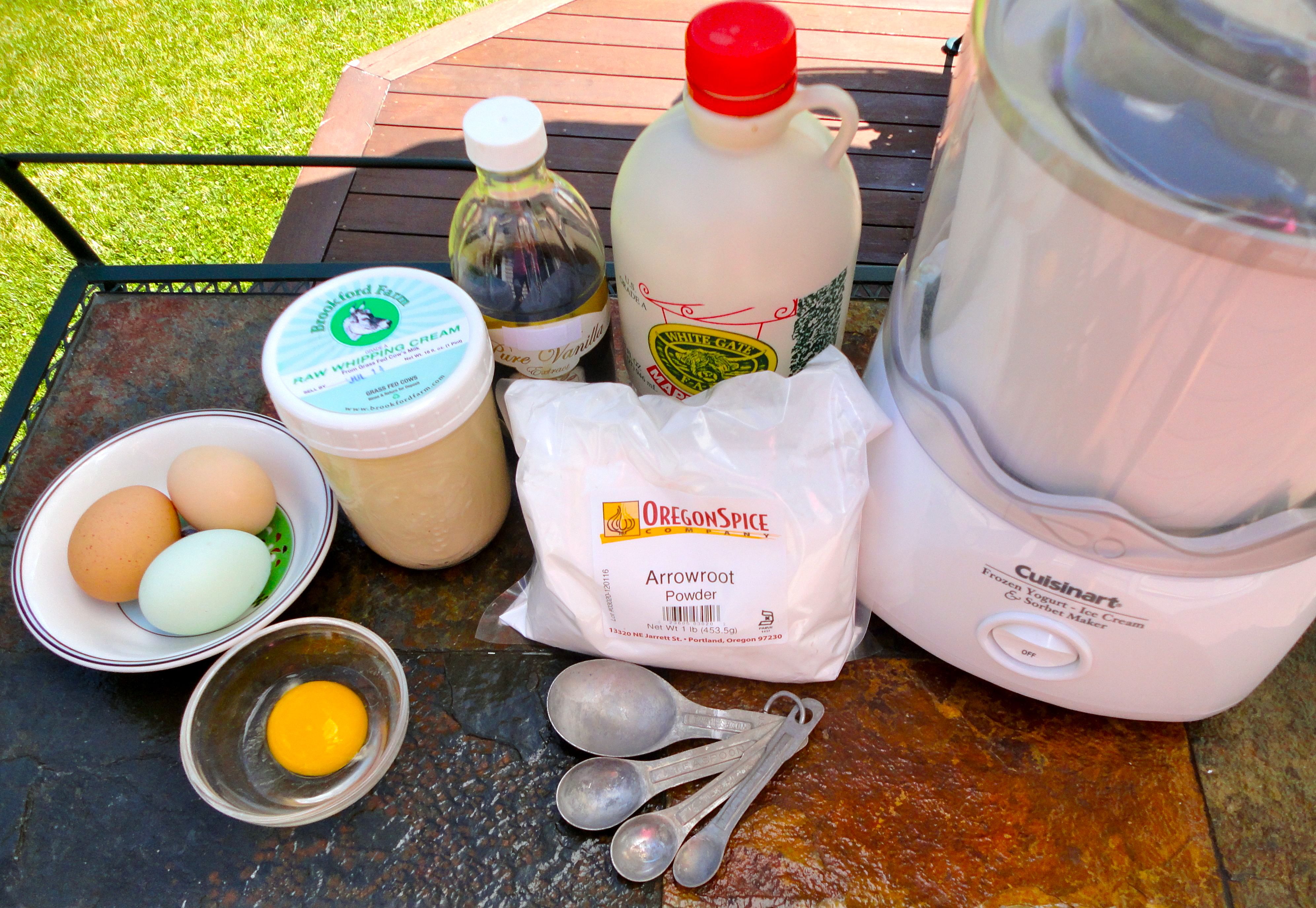“Desserts” is “stressed” spelled backwards. In a world where many people struggle with rampant sweet cravings, uncontrollable urges for refrigerator raiding and dangerously volatile blood sugar levels, this seems all too appropriate. Yet it doesn't have to be this way. While commercial desserts have people spinning with refined sweeteners, white flours and hydrogenated oils, there are nutrient dense, whole food alternatives. By making desserts in the home, you are able to select the highest quality ingredients, enjoy treats fresh without preservatives, limit the amount that you have teasing you as they sit tauntingly on the counter, and enjoy some jovial smiles and spatula-licking along the way. Some people believe that the total elimination of sugary sweets works best for them, however, if you want to revel in the occasional delight of ice cream melting on your tongue on a breezy summer afternoon, go ahead and try a delicious scoop of homemade raw vanilla ice cream with this recipe from Nourishing Traditions.

What went wrong with ice cream?
Ice cream has a long tradition as a cool and scrumptious treat. Classically, it has been deservedly enjoyed after a laborious process of churning ingredients in the home freezer, and the tedious anticipation of waiting for them to freeze and harden. Now, with the ability to drive to the grocery store and grab several colorful containers from the freezer section, the charming homemade undertaking has been largely lost, and so has quality. The United States, not shockingly, is the world leader in commercial ice cream sales worldwide, with sales of frozen desserts reaching the $25 billion mark in 2009 and rising from there. Contributing to this spike in sales are the medley of devastatingly cunning ice-cream alternatives invading shelves. These impostors include low-fat or slow churned options, sugar free concoctions, “soft-serves,” non-fat frozen yogurt treats and neon sherbets. Empty of nutrients, these unregulated products have the milk fats removed, and in an effort to maintain palatability are infused with chemical sweeteners and preservatives that are utterly unsatisfying and addictive. Even the mass-produced full-fat ice creams have now been found by analysis to have startling unlabeled chemicals in the mix such as diethylglycol, an emulsifying compound found in antifreeze and paint removers. Some brands are better than others, so if you are going to buy at the store, be sure to do your research. Most all of these boxed treats are far from the wholesomeness that the original recipes intended.
Getting back to nutrient dense goodness
Homemade ice cream has a delicate blend of nutrient-dense ingredients that work synergistically to provide both valuable nourishment and divine taste. One of these premiere ingredients is fresh raw cream. High in fragile fat-soluble vitamins, minerals and amino acids, it is essential that cream be raw and not pasteurized or heated. Most store-bought creams are ultra-pasteurized, meaning that delicate nutrients have been obliterated and the fat content denatured by extremely high temperature processing. Raw cream on the other hand, is a nutrient rich, living food that is abundant in enzymes and beneficial bacteria to bolster intestinal health and immune system function.
Egg yolks are also an important ice cream ingredient. Rich in healthy cholesterols and essential fatty-acids, they are among the best sources of natural Vitamin A. Furthermore, the combined fats in the cream and egg yolks are key in slowing the absorption of sugar in the blood stream for greater stability. These products are also crucial in providing fat-soluble nutrients for the long-term health and protection of the glands involved in blood sugar regulation.
The ice cream recipe we use, as recommended by Sally Fallon, contains maple syrup instead of sugar. This natural sweetener is derived from the concentrated sap of large deciduous trees and is rich in trace minerals absorbed from the deep earth through the tree’s roots. It is considered to be one of the most beneficial natural sweeteners when consumed in moderation. Many commercial brands of maple syrup use formaldehyde in processing however, so be sure to find a source that is both organic and pure.
Arrowroot is a thickening starch used in this recipe for its smooth texture and favorable vanilla-like flavor. Arrowroot is derived from the root of a West Indian plant, Marantha arundinacea, which thrives in tidal flats. Thus this unique agent has a high sea mineral content and contains calcium ash, which assists in the maintenance of acid and alkaline balance.
For added enzymes, protein and crunch, we included walnuts right into our ice cream, but be creative! You can also add other nuts, fruit or whipped cream for a topping.
Homemade Vanilla Ice Cream
Enough explaining. Time to dive into the fun part! You will need an ice cream maker for this project. If you don't have one, these simple devices are easily found at stores that carry small kitchen appliances.

Ingredients:
3 egg yolks, preferably organic and local from pastured hens
1/2 cup maple syrup
1 tablespoon vanilla extract
1 tablespoon arrowroot powder
3 cups heavy cream, preferably raw, not ultrapasteurized
1/2 cup walnuts, finely chopped (optional)
Beat egg yolks and blend in remaining ingredients. Pour into an ice cream maker and process according to instructions. For ease of serving, transfer into shallow glass container, cover and store in the freezer.
Resources
Nourishing Traditions by Sally Fallon
Packaged Facts: U.S. Ice Cream and Frozen Dessert Market by Jenn Terkin
